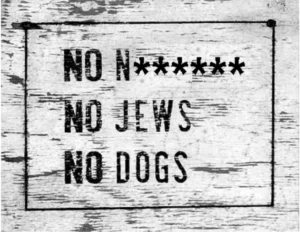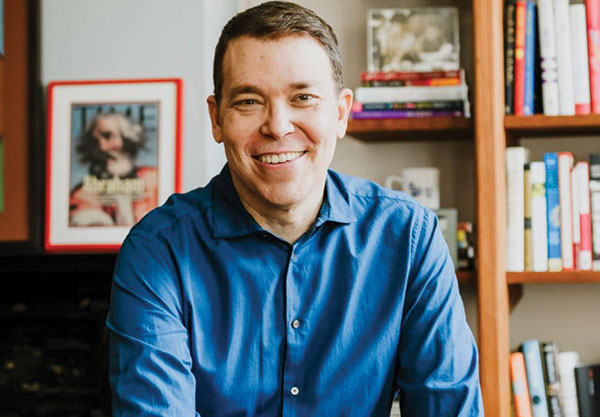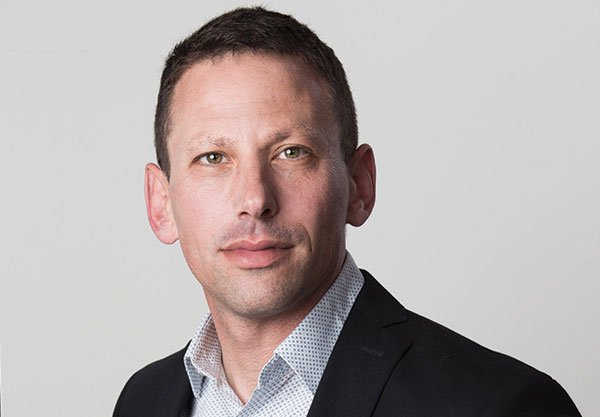27 Tevet 5785 / Monday, January 27, 2025
International Holocaust Remembrance Day falls today, Jan. 27.
A few years ago, I wrote a column comparing this day — International Holocaust Remebrance Day — to Yom HaShoah V’HaG’vurah ~ the Day of Remembering the Holocaust and Resistance, set for the 27th day of Nisan, which usually falls mid-to-late April, just a week or so after Passover. I am reprinting parts of my previous column with edits and updates given what our Jewish world has encountered in the last two years.
What’s in a name?
Shoah is a biblical Hebrew word for catastrophe and when referring to The Shoah, it references 1933-45 — namely the greatest modern tragedy to befall the Jewish people.
HaG’vurah is the Hebrew word for heroism and is derived from the word for might or strength.
Holocaust is a Greek term meaning “burnt, sacrificial offering to a god,” thus having theological implications which many people find distasteful.
Who established these days of remembrance and when were they established?
International Holocaust Remembrance Day was designated by the United Nations General Assembly in 2005 to commemorate the liberation of Auschwitz-Birkenau (January 27, 1945) when Soviet troops entered Auschwitz. The UN urges every member state to honor the six million Jewish victims of the Holocaust and the millions of other victims of Nazism. Member states of the UN are encouraged to develop educational programs to help prevent future genocides.
Yom HaShoah v’HaG’vurah was established by the Israeli Knesset in 1951 and is observed by Jewish communities throughout the world. The idea of remembering the Holocaust and its heroism is inspired by the idea that on April 19, 1943 — on the eve of Passover, the Jews of the Warsaw Ghetto fought back. Led by Mordechai Anielewicz, the Jews of the Ghetto launched the Warsaw Ghetto Uprising. While the uprising could not be remembered on the eve of Passover for eternity, the date was set to coincide with the week after Passover and the week before Yom HaZikkaron and Yom HaAtzmaut, Israel’s Memorial Day and Independence Day.
Yom HaShoah v’Ha’G’veurah was created to remember not only the horrors of the Shoah but also the heroes. The goal of the Israeli leadership was both to remember and to focus on the strength of the Jewish people.
Notice the differences and how timing is everything.
International Holocaust Remembrance Day commemorates Jews being liberated by others.
In contrast, Yom HaShoah V’HaG’vurah commemorates Jews working to liberate themselves.
Dara Horn has well documented how People Love Dead Jews (see her book by that title or her corresponding podcast, “Adventures with Dead Jews”), which is why every time there is an antisemitic incident in a school or public space, educators prefer to quote Anne Frank or invite an ADL representative to discuss the dangers of “hate.” International Holocaust Remembrance Day takes us back to the concentration camps, when the Jews were powerless and others came to save us. While that kind of information is valuable and must be studied, much the way we need to read, review, and watch what happened on October 7, 2023 — we are compelled to at least try to see ourselves as responsible for our own freedom, actions, and consequences. People may prefer to see dead Jews, but we are the living ones who have the chance to tell and develop our own story.
Liberation from within or from beyond
A few years ago, I listened to a very significant Times of Israel podcast about the difference between the two days and ways to remember our people’s story from the Shoah. Journalist and correspondent Haviv Rettig Gur suggests that the date sends a message. Below, I share with you a transcript of his remarks. Before you read Haviv’s words, consider a teaching from the Baal Shem Tov (Hasidic Master of the 18th century) who said “In remembrance is the secret of redemption.”
Remembering is not only critical – redemption relies upon it.
The Warsaw Ghetto Uprising was not enough to save our people. But remembering it is part of the secret to our ultimate redemption and if nothing else — our survival as we note the role of personal and collective agency.
Our liberation from the various camps was thanks to the Allies, who were fighting many fronts. The Jewish cause was not their highest priority and VE Day was long after the Warsaw Ghetto Uprising. The liberation from Auschwitz-Birkenau is important and the soldiers and countries who came to our aid literally were our redeemers and saviors. But we must be active agents for our own redemption as well. Mordechai Anielewicz remains a hero because he fought back. As Jews we have learned we cannot wait for others to redeem us. We must be prepared to defend ourselves from enemies who seek to destroy us.
Haviv could not have imagined what was coming, not even two years after he posted the following interview. Had Hamas had the manpower and strategic ability, they would have murdered far more than 1,200 and stolen more than 250 on that black Shabbat. The State of Israel was in exile on October 7th when the border was breached and Jews, Israeli Arabs, and foreign nationals were brutalized, murdered, torched, and raped. Israel was meant to be a safe haven when we know the Diaspora is not. Israel survived because of heroism and thank God, a military that found its strength. But for many hours, Israelis were vulnerable in ways they had not been for many years. Given the hostages who remain in enemy hands and plans that continue to be foiled, we know that resistance and vigilance remain critical.
On this day, I honor all who saved Jews — and the millions of others — from the hands of Nazi evil. And I will remember all who died through the Nazi machines of death. But I will remember those events alongside the resistance in the springtime, when we are commemorating Pesach and Israel’s establishment in order to frame that memory and redemption, personal commitment and salvation go together.
May we find the strength and resolve inside our hearts and souls to stand with resilience and fortitude in the face of those who hate. And may we be surrounded by allies who are ready to come to our aid when we are in need.
The Daily Briefing Podcast by the Times of Israel, 27 January 2022
From Haviv Rettig Gur: Today is International Holocaust Remembrance Day. But it is not my Holocaust Remembrance Day. The date — January 27 — is a message. It was the day the Red Army liberated Auschwitz in 1945. The message is clear that there is a world community that ultimately stopped the Holocaust. Allies who fought and defeated the Nazis. Except that wasn’t how it felt to the victims. When the allies had the chance, the allies did not bomb the death camp infrastructure, even late in the war. When they had the capacity and the killing was at its peak, millions of Jews were subsequently trapped by that very same liberating Red Army, behind an iron curtain for the next five decades. And by the time the Red Army enters Auschwitz two-thirds of European Jewry was already dead.
I don’t like pegging International Holocaust Remembrance Day to the day that some international community — that did not exist for the victims — ended the war. It is a strange way to frame the Holocaust. So this day is a kind of fallacy. It is a message that there is this international community that remembers the war; and celebrates the fact that international actors brought it to an end. It is why a lot of the world community, the diplomatic elite of the world, and the United Nations really love this day.
I like the Israeli/Zionist remembrance day better. It falls in exactly 90 days, a week after Passover and before Israel”s Memorial Day for fallen soldiers and victims. Our day remembers not the courage of other armies in rescuing helpless victims, it remembers the courage and dignity of the victims themselves. It remembers the Warsaw Ghetto Uprising, it remembers how millions faced the deepest darkest pit of despair, walk through the valley of death not as an analogy but as a simple, bitter reality. And how they kept their humanity. How countless of them survived and rebuilt their lives and rebuilt our people.
One hundred and twenty years ago political Zionism warned that Europe’s grappling with its new national identities, new German-ness, new Polish-ness, new French-ness — with the way minorities spoil that narrative of an immutable organic truth of nationalism would end in catastrophe. Even though things looked like they were leaning toward liberalizing middle-class kinds of societies. There were new parliaments and they had new powers. In the end, it would fail. And there were these murderous impulses in modern Europe and they would turn on the Jews. The Zionists founders didn’t imagine Auschwitz, but they did predict the collapse of European Jewry. Herzl once told the Rothschild family when he met them ‘Will it be a revolutionary expropriation from below? Will it be a reactionary confiscation from above? Will they chase us away? Will they kill us? I have a fair idea it will take all these forms and others.’
The Jews who will build Israel understood something about the modern world, long before the modern world understood it about itself. Today too, when it comes to Holocaust Remembrance Day itself — Zionism and the Jews understand something about how we should remember that the rest of the world seems to be missing.




